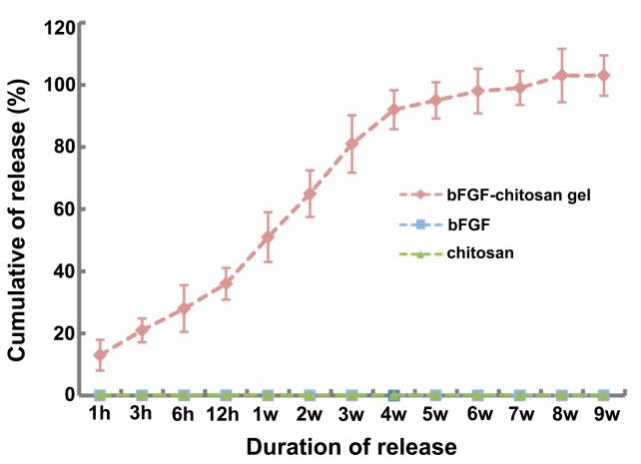中国神经再生研究(英文版) ›› 2024, Vol. 19 ›› Issue (2): 409-415.doi: 10.4103/1673-5374.375344
碱性成纤维细胞生长因子-壳聚糖凝胶修复缺血性脑卒中
Activation of endogenous neurogenesis and angiogenesis by basic fibroblast growth factor-chitosan gel in an adult rat model of ischemic stroke
Hongmei Duan1, #, Shulun Li1, #, Peng Hao1, Fei Hao2, Wen Zhao1, Yudan Gao1, Hui Qiao3, Yiming Gu4, Yang Lv3, Xinjie Bao5, Kin Chiu6, Kwok-Fai So7, 8, 9, 10, 11, *, Zhaoyang Yang1, *, Xiaoguang Li1, 12, *
- 1Department of Neurobiology, School of Basic Medical Sciences, Capital Medical University, Beijing, China; 2Beijing Key Laboratory for Biomaterials and Neural Regeneration, School of Engineering Medicine, Beihang University, Beijing, China; 3Department of Epidemiology and Statistics, School of Public Health and Management, Ningxia Medical University, Yinchuan, Ningxia Hui Autonomous Region, China; 4Department of Physical Education, Capital University of Economics and Businessm, Beijing, China; 5Department of Neurosurgery, Peking Union Medical College Hospital, Chinese Academy of Medical Sciences and Peking Union Medical College, Beijing, China; 6Department of Psychology, State Key Lab of Brain and Cognitive Sciences, The University of Hong Kong, Hong Kong Special Administration Region, China; 7Guangdong-Hongkong-Macau Institute of CNS Regeneration, Ministry of Education CNS Regeneration Collaborative Joint Laboratory, Jinan University, Guangzhou, Guangdong Province, China; 8Bioland Laboratory (Guangzhou Regenerative Medicine and Health Guangdong Laboratory), Guangzhou, Guangdong Province, China; 9Department of Ophthalmology and State Key Laboratory of Brain and Cognitive Sciences, The University of Hong Kong, Hong Kong Special Administration Region, China; 10Center for Brain Science and Brain-Inspired Intelligence, Guangdong-Hong Kong-Macao Greater Bay Area, Guangzhou, Guangdong Province, China; 11Co-innovation Center of Neuroregeneration, Nantong University, Nantong, Jiangsu Province, China; 12Department of Biomedical Engineering, School of Biological Science and Medical Engineering, Beihang University, Beijing, China
摘要:
已有研究尝试应用生物材料促进移植细胞增殖和分化、迁移、存活和血管的形成。然而,生物活性材料是否能通过激活内源性神经生成和血管生成来修复缺血性脑卒中目前尚不清楚。实验在建立大鼠缺血性脑卒中模型后7d,将装载碱性成纤维细胞生长因子的壳聚糖凝胶移植到脑组织空洞内。凝胶缓慢释放碱性成纤维细胞生长因子,改善局部微环境,激活内源性神经干/祖细胞,募集这些细胞向半暗区和空洞迁移,随后分化为神经元,同时促进半暗区和空洞的血管生成,最终改善大鼠的运动功能。该研究揭示了生物活性材料修复缺血性脑卒中的机制,从而为临床应用生物活性材料治疗缺血性脑卒中提供一种新策略。
https://orcid.org/0000-0003-4039-4246 (Kwok-Fai So); https://orcid.org/0000-0001-8313-6998 (Zhaoyang Yang); https://orcid.org/0000-0003-4480-3676 (Xiaoguang Li)







